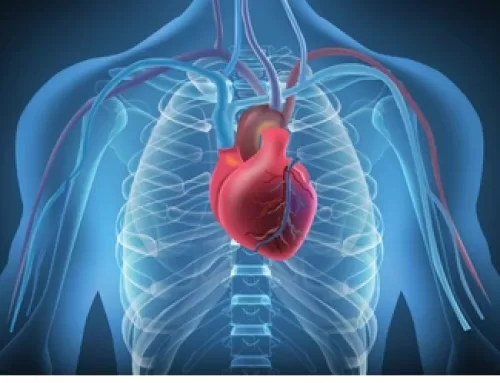Let’s take a look at the study; Obesity linked to Arterial Stiffening Pathway.
A total of 77 adults and 18 children ranging in age from 8 to 100 years old were evaluated using 1H-MR spectroscopy to measure the amount of fat in the liver and magnetic resonance imaging to measure the aortic pulse wave velocity (PWV) and regional distensibility. These participants did not have any known cardiac risk factors. Independent predictors of PWV in adults were age (β=0.09; P=0.02), liver fat (β=2.5; P=0.04), and serum triglyceride (β=0.47; P=0.01), according to multivariable regression. Indirect effects via increased triglyceride account for 43% of the total negative effect of hepatic fat on PWV, according to age and blood pressure-adjusted, moderated regression (P=0.005). The correlation between hepatic fat and regional distensibility was positive (r=−0.35 for ascending, r=−0.23 for descending, and r=−0.41 for abdominal; all P<0.001). The correlation between liver fat in children and PWV (r=0.72; P<0.001) and abdominal regional distensibility (r=−0.52; P<0.001) was similar to what is observed in adults.
Multiple patient groups have demonstrated that aortic pulse wave velocity (PWV), a practical and clinically-validated indicator of central arterial stiffness, is a predictor of higher mortality, coronary heart disease, and stroke. Large epidemiological studies have shown that approximately 12% of the increase in cardiovascular disease related to body mass index is due to adipose-mediated increases in PWV. This suggests that changes in adipose levels over time are important modifiable determinants of arterial aging, and obesity is associated with increased PWV even when metabolic syndrome is not present.
Obesity is associated with a higher risk of non-alcoholic fatty liver disease (NAFLD), which in turn increases the likelihood of arterial stiffness; however, the exact processes by which obesity promotes vascular stiffness remain unclear. Obesity likely compromises artery elastic function through this critical process. Evidence for this includes the following: a decreased adiponectin level, reduced endothelial function, increased carotid intima-media thickness, metabolic syndrome, diabetes mellitus, and NAFLD as an independent risk factor for coronary vascular disease. Given the significant rise in childhood obesity and nonalcoholic fatty liver disease (NAFLD), it is definitely warranted to investigate whether there is a connection between vascular stiffness and liver fat deposition in children.
In adults, aortic stiffness increases with age, liver fat, and triglycerides. Hepatic fat negatively impacts PWV even after adjusting for age and blood pressure; this effect is largely indirect and manifests as an increase in circulating triglyceride levels. Both adolescents and adults exhibit this association between hepatic fat and aortic stiffness at an early stage of obesity. Therefore, hepatic fat content could be a therapeutic target for obesity’s increased vascular risk.
If you’d like to read more about Obesity linked to Arterial Stiffening Pathway, you can read the entire informational article Here







Leave A Comment